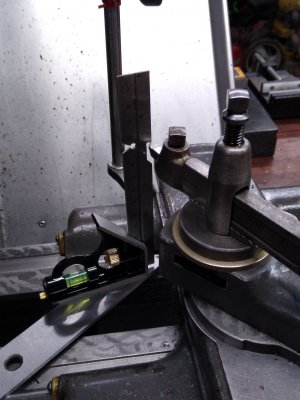- Joined
- Jan 27, 2017
- Messages
- 184
The height adjustment screw is 1/2-20, it’s locked in the base with a set screw, and the upper sleeve has a nylon-tipped set screw to lock it in position once adjusted.
View attachment 234565
.
David,
I'm getting ready to attempt a similar project and have a newbie question about the design. Regarding the 1/2-20 adjustment screw - why is this done with a screw and set screw as opposed to machining the 1/2-20 thread as part of a solid body base. I realize there are often multiple way to accomplish the same thing just trying to understand the pros and cons of the choices.
Thanks,
Mark


